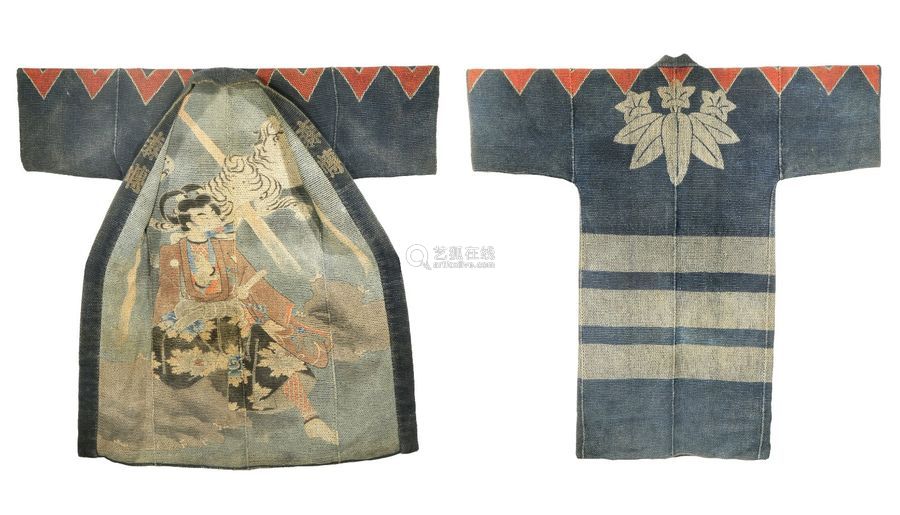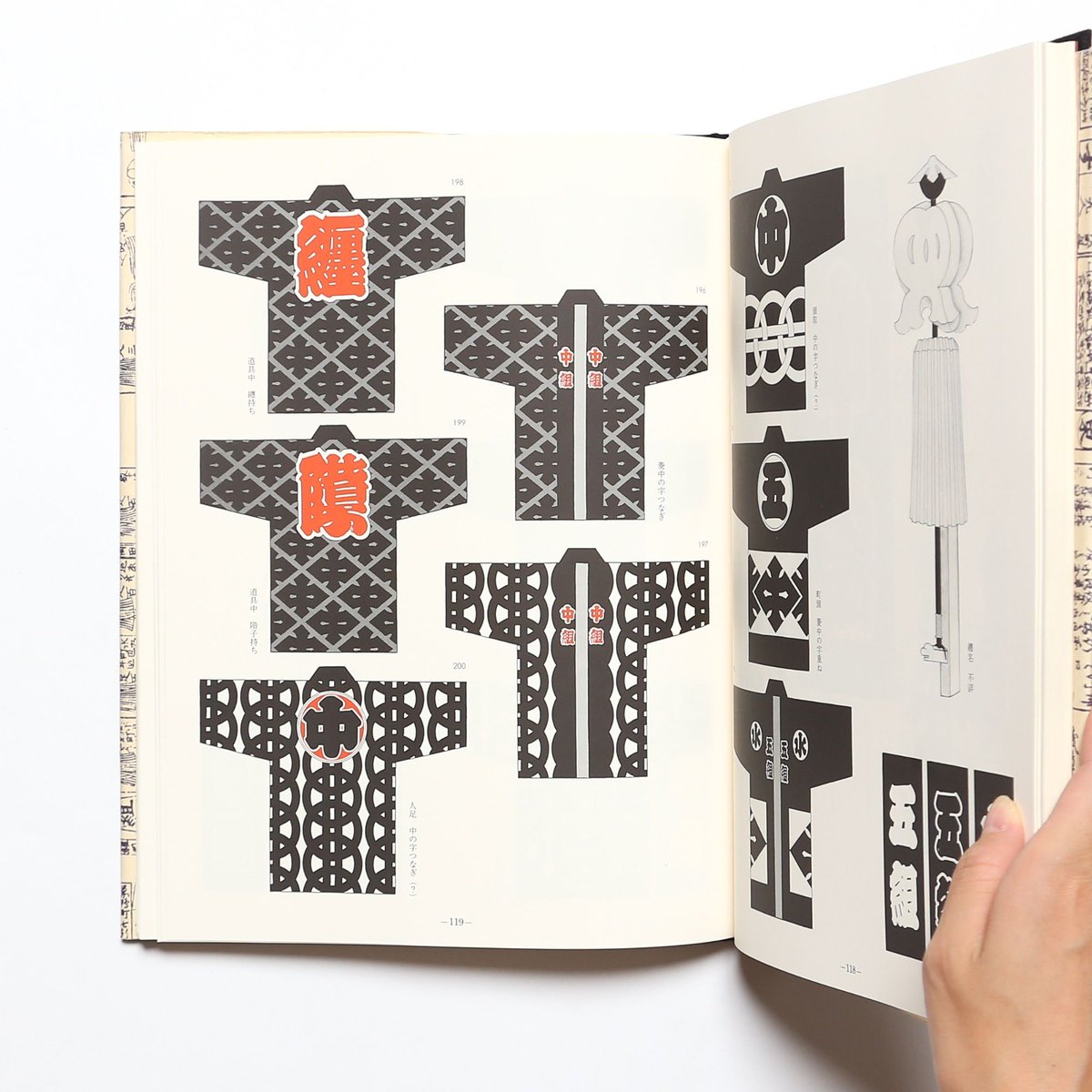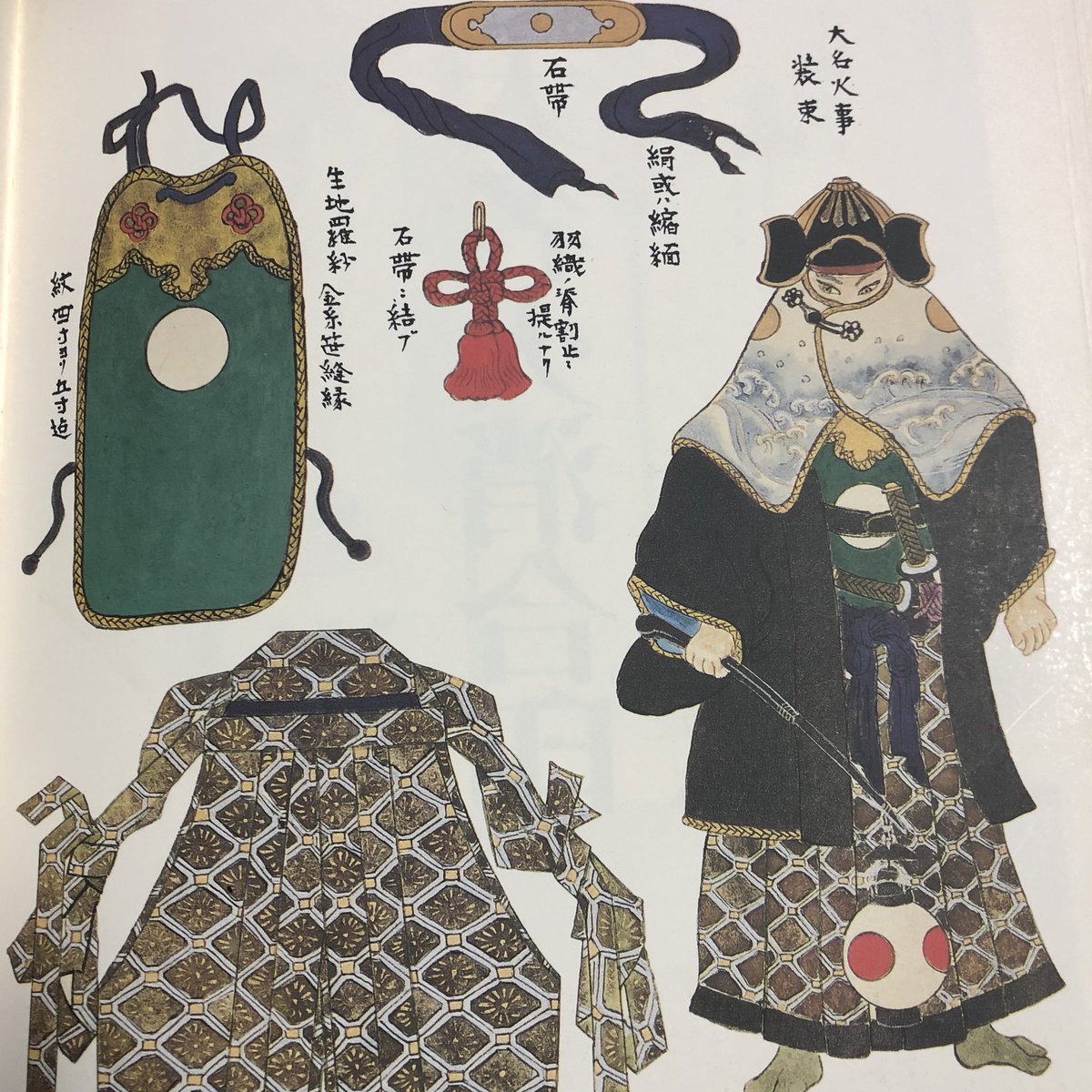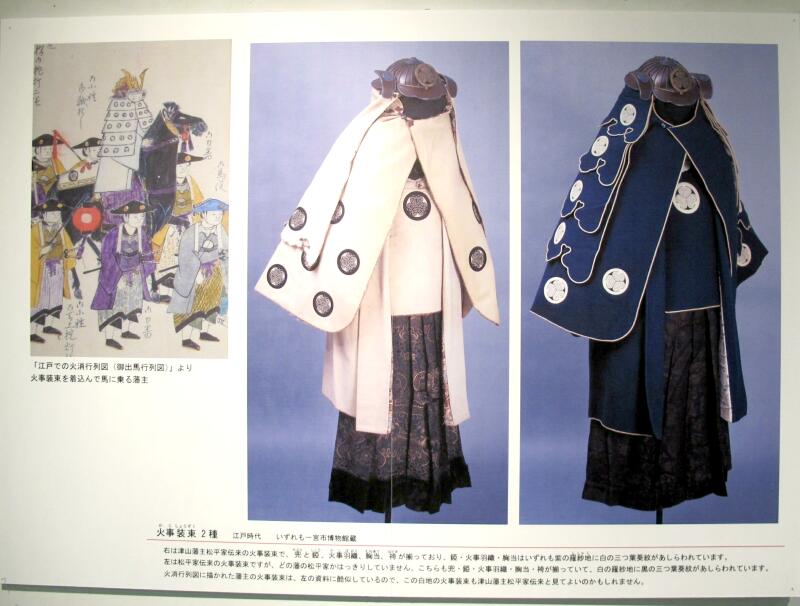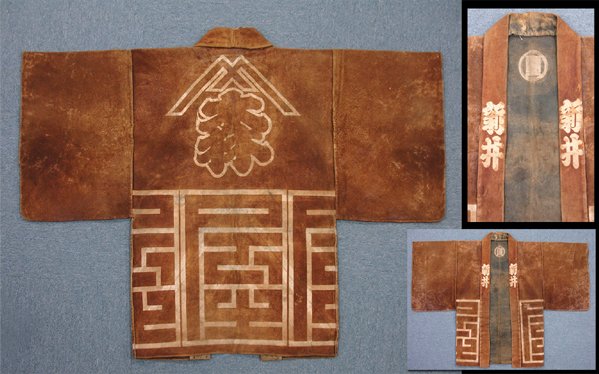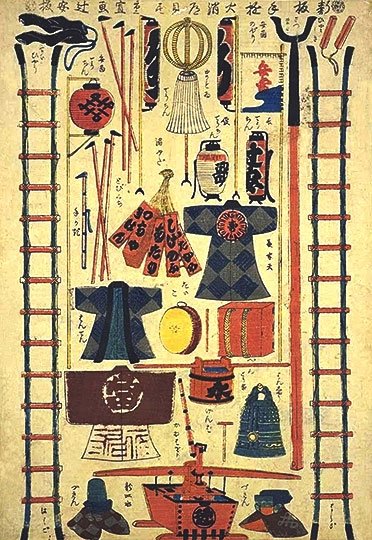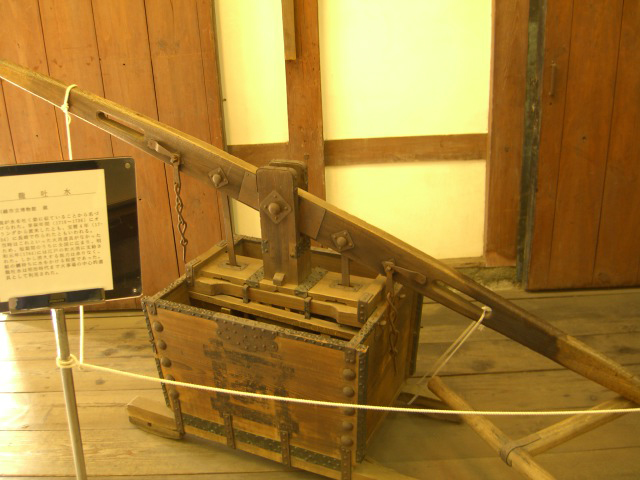This is a great thread of quilted (sashiko 刺し子) firemen's jackets (hikeshi banten (火消し半纏).
As noted, these are the insides. The longer read in the link lower down is worth it.
The thread is full of great pictures of these jackets.
 https://twitter.com/dfedman/status/1352470535184076801
https://twitter.com/dfedman/status/1352470535184076801
As noted, these are the insides. The longer read in the link lower down is worth it.
The thread is full of great pictures of these jackets.

 https://twitter.com/dfedman/status/1352470535184076801
https://twitter.com/dfedman/status/1352470535184076801
The outside would be "plain" with stripes, colors, and characters on the lapels, and sometimes/often characters on the back. Sometimes the outside are pretty colorful as well.
The lapel and back would show the "brigade" to which you belonged, and the lapel would show rank.
The lapel and back would show the "brigade" to which you belonged, and the lapel would show rank.
These are made by using a resist dye technique called tsutsugaki 筒がき and then the jacket is sowed together with an inner layer (sometimes exotic, sometimes plain), a few layers of cloth on top, then the outer layer. It is then stitched through, bunching the material up
slightly to make the several layers create slight internal folds. This creates padding and the multiple layers means it burns more slowly. As noted, the jackets would be doused with water. These jackets often came with hoods and mittens, also quilted. Later in the Meiji period
these brigades were less of a neighborhood watch thing and more professional, and the hoods became helmets, and the uniforms even more uniform-like.
But the old ones are beautiful. They would really only be shown inside out when drying, or hanging out waiting to be used, or when
But the old ones are beautiful. They would really only be shown inside out when drying, or hanging out waiting to be used, or when
worn in neighborhood festivals at times, but most of the time, the inside being allowed to peek out was yet another way that Edo period men, living under rules requiring a lack of ostentatiousness, displayed their style, and ability to afford it. Generically, these jackets were
more prevalent among the "commoner" class in crowded districts (and brigade jackets would be ordered like sports team jackets today).
Elaborately decorated jackets might be worn by wealthier denizens, and when there was a daimyo or equivalent, they get a Very Fancy Fire Jacket.
Elaborately decorated jackets might be worn by wealthier denizens, and when there was a daimyo or equivalent, they get a Very Fancy Fire Jacket.
Daimyo (lords) were rather thin on the ground, but really well-off high-class merchants and respected elders, especially in non-super-urban areas in Edo period, might have worn leather "fire jackets" (these are deer leather, with a resist paste applied, then smoked to be brown).
A brigade (消防団) would have various members performing various functions. One would hold the matoi (纏) - a garish decoration at the top of a pole which would act as a brigade signal flag - others would hold lanterns, both normal and at the end of long poles
Others would carry a pump (shown above and below), others buckets on shoulder bars, and still others would carry long poles with sharp hooks at the end (see above) which would be used to pull down the wooden sheathing/shingles of houses.
Getting people out of houses was job #1
Getting people out of houses was job #1
but after that, the idea was to create a zone around a fire so that it could not spread further, so houses on fire would be pulled down so embers could be doused on the ground rather than spread one or two floors up in the wind, and buildings nearby might get pulled down too.
Personally, I love these jackets. They are beautiful examples of the workmanship and artisanship that Japan brings to common functional items, which is a basic principle of the "Mingei" appellation to such work, first applied by Yanagi Soetsu and his friends in the early
part of the 20th century and now celebrated in the Mingeikan (Folkcraft museum) in southwestern Tokyo not far from Shibuya Station (it's a 15-20min walk).
Note for clarification: In @dfedman's excellent thread, the basic design for all of the pieces is done in tsutsugaki (resist dye technique) while the ones with more elaborate color fading/mixing are done w/ a "watercolor technique" to paint inside the lines. Especially 3,4,6,7.

 Read on Twitter
Read on Twitter

